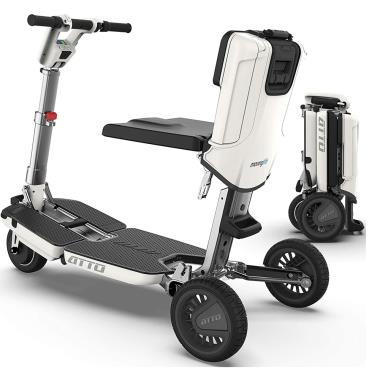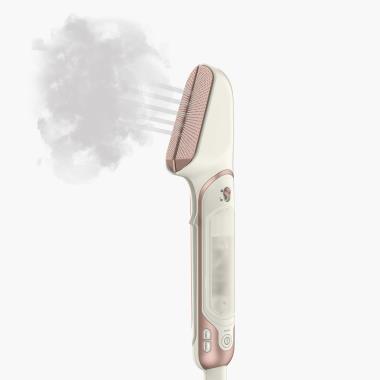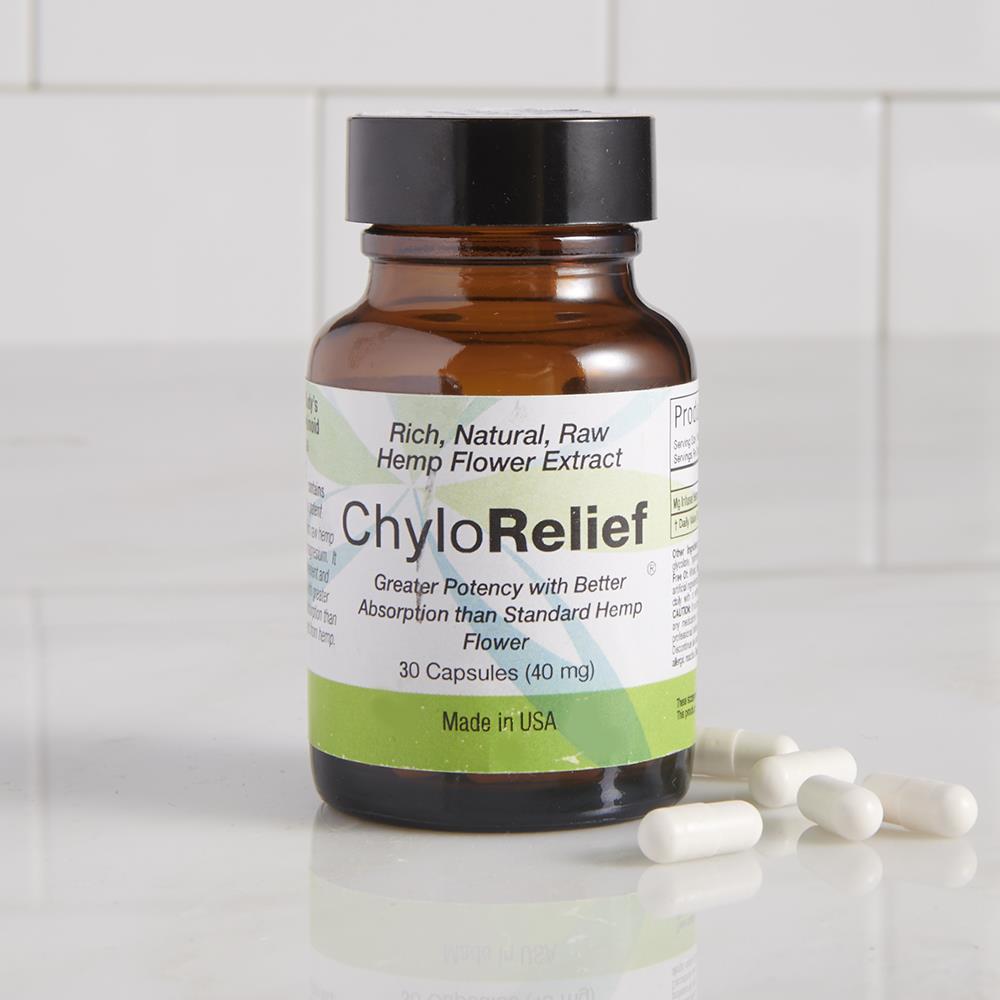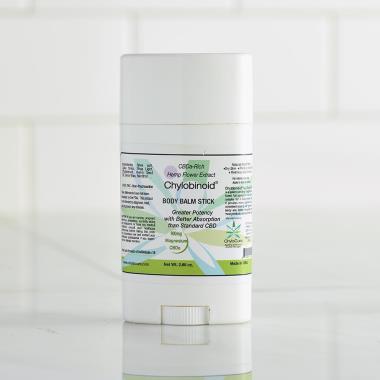The Professional's Pain Relieving CBDa Capsules Subscription
5 (1 Reviews)Product Story
This is the subscription plan for The Professional’s Pain Relieving CBDa Capsules that ensures you are automatically supplied with a physician-recommended natural treatment for pain relief, along with 10% savings.
Recommended by Dr. Scott Palmer, professional sports team physician, these are the easy-to-swallow capsules that contain 40mg of magnesium infused, CBDa-rich Chylobinoid for effective, natural pain relief. The capsules are created using a proprietary refinement and filtering process that enhances the potency and pain-relief benefits of CBDa-rich hemp extract. The magnesium infusion combined with an acid-resistant coating allows the active ingredients to be delivered to the small intestine (instead of the stomach) for optimum absorption into the bloodstream. Made in America, the capsules contain less than 0.3% THC. Each bottle contains 30 capsules.
You will receive a subscription box of your Professional’s Pain Relieving CBDa Capsules delivered right to your door. To get started, choose one of the two durations that best works for you:
Month-to-Month
- One bottle at 10% off every 30 days
Every 2 Months
- One bottle at 10% off every 60 days
The Living Well Advantage Program
- Convenient Home Delivery. Your scheduled shipment of the Professional’s Pain Relieving CBDa Capsules is sent directly to you in discreet packaging.
- Peace of Mind. Rest easy knowing you'll always have Pain Relieving CBDa Capsules when the need arises.
- Lifetime Guarantee. There's no risk, no obligation, and you may cancel at any time.
Customer Reviews
5 (1 Reviews)The statements made regarding this product have not been evaluated by the Food and Drug Administration. The efficacy of this product has not been confirmed by FDA-approved research. This product is not intended to diagnose, treat, cure, or prevent any disease. No information presented here is meant as a substitute for or alternative to information from healthcare practitioners. Please consult your healthcare professional about potential interactions or other possible complications before using any product. The Federal Food, Drug, and Cosmetic Act requires this notice.
This item may not be sold in CANADA and the following U.S. states:
|
Serving Size: 1 Vegan Capsule
Servings Per Container: 30
| Amount Per Serving |
% of Daily Value |
|
|---|---|---|
| Mg Infused Hemp Extract as Chylobinoid | 40 mg | * |
*Daily Value not established
Other Ingredients: Silicificed microcrystalline cellulose, sodium starch glycolate, hypromelose (vegan capsule) with delayed release technology.
Free Of: Wheat, dairy, soy, seafood, egg, yeast, tree nuts peanuts and any artficial ingredients
Directions: For Adults, take one (1) capsule 1-2 times daily with or without food as or as directed by a healthcare professional
FDA Disclosure: These statements have not been evaluated by the FDA and are not intended to diagnose, treat, or cure any disease.
For answers to many of our CBD and CBDa questions, see our Ask the Doctor Webinar recording here:
The Basics
CBD versus CBDa
CBDa is cannabidiolic acid and is what the hemp plant produces. CBD is cannabidiol and is the product of conversion, more specifically decarboxylation, of CBDa to CBD. Cannabinoids are compounds that are found in abundance in hemp and marijuana plants (see below for the difference). There are between 80 and 100 different cannabinoids isolated from the hemp and marijuana plants and virtually all of them have healthful benefits, like anti-inflammatory, sedative, and anti-biotic properties, to name a few. CBD has been the most popular cannabinoid used that does not cause the user to get “high” like THC does. However, researchers have recognized the enhanced properties that CBDa has over CBD. For example, it has been shown that CBDa is more potent than CBD in treating anxiety, depression, nausea, and inflammation.
What is Chylobinoid®?
Our products are powered by Chylobinoid®, a magnesium-infused, full-spectrum cannabinoid complex rich in cannabidioliac acid (the precursor to cannabidiol). It includes all natural ingredients that support the endocannabinoid receptor system (ECS). We believe this product has greater potency, better absorption, and enhanced bioavailability than CBD. Additionally, we find it to be more effective in treatment of pain, inflammation from microbial infections, sunburn and eczema.
Is CBD and CBDa safe?
The short answer is yes. CBD has a very long history of safe use. CBDa does too, it's just that its known history is much shorter (excluding the fact that CBDa that has been in hemp for as long as humans have been consuming hemp). There have been several studies showing the safety of CBD in animals and humans.
| HEMP vs. MARIJUANA | ||
|---|---|---|
| HEMP | MARIJUANA | |
| Cannabis Derived? | Yes | Yes |
| Plant Species | Cannabis | Cannabis |
| Plant Strain | Cannabis sativa L | Cannabis indica |
| THC Concentration by dry weight | Low THC (avg: < .3%) |
High THC (avg: 5-30%) |
| CBD Concentration | High in CBD per Mass | Low in CBD per Mass |
| Cultivation | Extremely resilient. Requires minimal care when farmed. Grows in most climates. | Temperamental. Only grown in certain climates or controlled atmosphere green houses. |
| Applications | Hemp-derived CBD, clothing, food, plastic, building material, ect. | Medical and recreational use only |
| Apperance | Skinny leaves and top heavy. Grows up to 20 feet tall. | Grows like a short, rounded bush |
The Science behind CBDa
The following scientific information is provided by the manufacturer of The Professional’s High Potency CBDa Cream.
Cannabis Value
The Cannabis plant’s use as a medicine dates back nearly 9,000 years. The active ingredients in the cannabis plant are known collectively as cannabinoids.
The most prominent cannabinoid is tetrahydrocannabinol or THC, which is found in the marijuana variety of cannabis and is the cannabinoid that is responsible for the “high” one gets when one smokes cannabis flower. The other prominent cannabinoid is cannabidiol, which is found in the hemp variety of cannabis and is the cannabinoid that has been discovered to have many healthful benefits. The cannabinoid complex is a prolific profile that also contains cannabidiolic acid (CBDa), tetrahydrocannabinolic acid (THCa), cannabigerol (CBG), cannabigerolic acid (CBGa) and cannabinol (CBN).
The cannabinoids’ importance in maintaining human health is related to the cannabinoid system in our bodies, which includes the body’s own naturally produced endocannabinoids and their receptors upon which endocannabinoids bind. Endocannabinoids, and, for that matter, all naturally produced molecules, were designed by nature over millions of years (i.e. evolution) to benefit the organism’s ability to survive. These naturally evolved molecules express their healthful benefits inside the organism’s body through a myriad of biochemical processes, such as binding and interacting with their corresponding naturally designed receptors. This evolutionary process starts from the simplest organism and continues to the most complex.3 Indeed, receptors of vertebrates (e.g. humans) and their receptor binders (also known as ligands) likely evolved from the corresponding receptors and ligands in microbes (e.g. antibiotics) and plants (e.g. cannabinoids). The evolutionary pressure placed on plants to produce natural products, such as cannabinoids, could very well have come from the vertebrates and the plants interacting with each other and sharing the benefits of co-evolution over millions of years.
Cannabinoids participate in keeping all the functions in the body in a normal operating mode even though the body is exposed to all kinds of attacks from the environment such as from the toxins we breathe and the toxins we eat. This maintenance of normal body function is known as homeostasis. Homeostasis also comes from endocannabinoids and cannabinoids acting at the intersection of the body’s various systems, allowing communication and coordination between the different parts of the body from the organs all the way down to the cells. The endocannabinoid system, with its complex actions in our immune system, nervous system, and all the body’s organs, is literally a bridge between body and mind.
It is intriguing to think that the intersection of plant and animal during the evolutionary process of both plant and animal manifest this beautifully designed symbiosis. ChyloCure is participating in the further enhancement of cannabis’ revolutionary benefits by applying science to this evolutionary remedy.
Cannabidiolic Acid Value
The health benefits of cannabinoids have been known and practiced for centuries. More than 26,000 studies and reviews referencing cannabis plants and cannabinoid molecules have been published in the recent past.
This renewed interest in cannabinoid benefits can be principally attributed to the recent discovery of the endocannabinoid receptors throughout the central nervous system.4 More specifically, many of the benefits attributed to cannabinoids stem from the effects of cannabidiol, the decarboxylated congener of cannabidiolic acid on other key receptors. While its mechanisms of action remain under study, it is proposed that the decarboxylated form interacts with multiple central nervous system receptors, ion channels and neurotransmitters. Additionally, its effects on adenosine reuptake, and the GPR-55 and TRPV1 receptors are thought to contribute to its antiepileptic properties in mice. When tested at the National Institute of Neurological Disorders and Stroke (NINDS) drug testing laboratory, Cannabidiol showed an ED50 for the MBS model of epilepsy of 85 mg/kg in mice and 89 mg/kg in rats. Cannabidiol was also active in the Metrazol model, the cardiogenic model, and other chemo-convulsant models at doses between 80 and 200 mg/kg.
As touched upon, recent identification of an integrated endocannabinoid regulatory system has helped us recognize and understand many of the health benefits of cannabinoids. This is explained, in part, by the cannabinoid molecules’ variable affinity for cannabinoid receptors expressed throughout the human body (although recently discovered, cannabinoid receptors are even expressed in very rudimentary species of animals). More recently, it has been discovered that other receptors and enzymes, such as PPAR, 5HT1A, GPCR, and COX-2, are likewise fundamental to cannabinoids’ diverse effects and mechanisms of action. Moreover, all cannabinoid acids, namely cannabidiolic acid, THCa and CBGa, outperform their corresponding neutral cannabinoids in terms of PPAR binding. This is particularly true for THCa, which has shown potent neuroprotective activity, possibly through down regulation of expression of inflammatory genes. Thus, THCa has been proposed to treat progressive neurodegenerative disorders such as Huntington’s disease and other neuroinflammatory conditions.5 Additionally, THCa has been shown in animal studies to limit the spread of prostate cancer cells.
Cannabidiolic acid, the predominant cannabinoid in many cannabis strains, demonstrates the importance of the interplay between cannabinoids and cannabinoid receptors. Much of the work demonstrating Cannabidiolic acid’s analgesic effect was conducted by Linda Parker and her associates who noted that THC’s anti-hyperalgesia was blocked by CB1 receptor antagonists, whereas cannabidiolic acid’s analogous effects were blocked by TRPV1 antagonists.6 This apparent selectivity of raw hemp extract at these transfer receptor sites is supported by Izzo7 wherein it was shown that cannabidiolic acid was an agonist for TRPA1 (nociception attenuation), TRPV1’ (cancer cell apoptosis inducer) and TRPM8.
Bolognini8 reported that cannabidiolic acid suppressed experimentally induced nausea in rats in a 5HT1A receptor-mediated manner. It was further reported that “compared with cannabidiol, cannabidiolic acid may display greater potency, efficacy and selectivity at ameliorating signs of cerebral infarction, anxiety and depression via 5HT1A receptor-dependent mechanisms in animal models.”
Considerable research on cannabidiolic acid’s interaction with COX-2 receptors has been conducted by Kazuhito Watanabe and associates at Hokuriku University. Specifically, in 2008 these researchers reported that cannabidiolic acid (~2 micromolar concentration) inhibited COX-2. It was further noted that full inhibition of the COX-2 receptor required the carboxylic acid moiety, thus cannabidiol is not nearly as active.9 Moreover, cannabidiolic acid is selective for COX-2 and does not inhibit COX-1, which is beneficial since inhibition of COX-1 may lead to unwanted side effects such as GI ulceration/bleeding and platelet dysfunction. Thus, the advantages of cannabidiolic acid’s selective inhibition of COX-2 may be quite substantial. Cannabidiolic acid’s dual inhibitory effects of COX-2 may also suppress genes associated with cancer metastasis.10 It was further determined that this COX-2 inhibition involves the down regulation of specific proto-oncogenes that promote the progression of some cancers.11 Recently it has also been shown that cannabidiolic acid has the unique ability to inhibit migration of highly invasive MDA-MB-231 human breast cancer cells.12
References Link - https://chylocure.com/science/references/








































